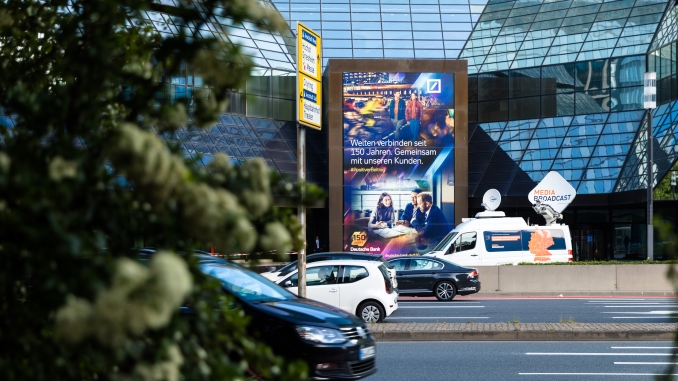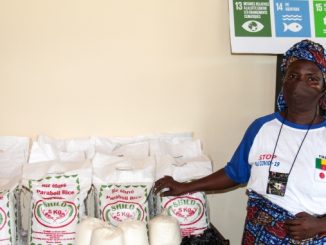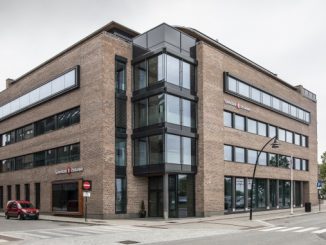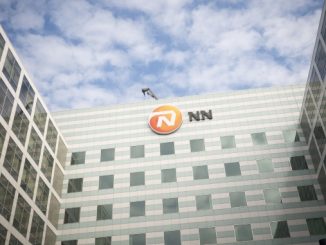
Deutsche Bank entered the green bond market on Tuesday as part of a push towards a recently-announced €200bn sustainability target, with a €500m six year non-call five senior preferred deal that achieved a €4.5bn-plus book and pricing inside fair value, global head of issuance and securitisation Jonathan Blake told Sustainabonds.
On Tuesday morning the German bank set initial price thoughts for the €500m no-grow six year non-call five senior preferred issue at the 200bp over mid-swaps area. After around three hours and 20 minutes, guidance was set at the mid-swaps plus 170bp area (plus or minus 3bp, will price in range) on the back of over €3bn of orders, and the deal was ultimately priced at 167bp with the book above €4.5bn.
“It was a massive success,” said Jonathan Blake, global head of issuance and securitisation at Deutsche Bank. “We had huge oversubscription, with over €4.5bn of orders for a €500m deal.
“From a pricing perspective, it was a great result – we saw the re-offer as about 3bp inside fair value. And it has performed extremely well in the secondary market, outperforming a rallying credit market since pricing.”
By Friday, the new issue had tightened to around 140bp over.
According to pre-announcement comparables circulated by the leads, Deutsche Bank’s August 2023 senior preferred issue was trading at 128bp, bid, on an i-spread basis, while Commerzbank senior preferred paper and selected green and social senior preferred and OpCo bonds were also referenced.
Although Blake said it is hard to put a precise figure on what difference the green aspect may have made to pricing, it tends to be worth zero to 5bp, depending on market circumstances.
“Given the demand for green assets and the relatively limited €500m available, we were probably at the upper end of that range,” he added.
Deutsche itself was sole bookrunner, while ABN Amro, Crédit Agricole, ING, Nomura and SEB were joint leads (no books).
The issuance of senior preferred fitted into Deutsche’s current funding plan and Blake said the issuer is agnostic when it comes to the choice of underlying security for its green issuance. The deal is understood to be the first callable senior preferred bank bond in green format.
The green bond debut comes after Deutsche on 12 May announced a target of achieving at least €200bn of sustainable financing and investments by 2025.
“We are driven by a very strong conviction to help shape the global change to a sustainable, climate-neutral and social economy,” said Deutsche Bank CEO Christian Sewing. “The target of €200bn in sustainable financing and ESG investments is ambitious compared to our peers.
“However, we are starting from a good base because, as a globally active financing house, we can serve the growing demand of our clients for sustainable investment products by ourselves.”
The target includes loans granted as well as bonds placed by Deutsche – it announced the formation of a sustainable finance team within the investment bank on 23 April, as well as an ESG competence team within the corporate bank on 1 June.
Acknowledging that the bank had been criticised for not having specific targets earlier, Gerald Podobnik, CFO of Deutsche Bank’s Corporate Bank – and a member of the German government’s Sustainable Finance Advisory Council – said the bank wanted to adopt an orderly, structured and clear approach.
“We also wanted to use the EU’s sustainability standard, the EU Taxonomy, as the basis for developing understandable criteria,” he said. “It simply has to be clear which activities help towards reaching our targets and which ones do not.”
The green bond framework makes reference to the taxonomy, noting that the framework will be updated to reflect its development.
Deutsche is ranked sixth in a 285-strong financials/commercial banks & capital markets peer group by ISS ESG, which provides the second party opinion for its green bond.
The three main asset types within the green asset pool are renewable energy (wind, solar and bio-mass), energy efficiency, and green buildings (construction and renovation of commercial real estate), principally covering SDGs 7, 11 and13, according to Deutsche’s framework. In this respect, the green bond framework is narrower than some recent examples (which also increasingly tie in with social and sustainability objectives).
“It’s not set in stone and can of course be amended going forward,” said Blake, “but we felt it appropriate to start with those business divisions within the bank where we expect to make progress most quickly.
“As we deliver on the €200bn target announced by Christian Sewing, a lot of that will be in the sustainable lending area and we expect to see that translate into new assets in our green asset pool.”
Deutsche now plans to be a regular issuer in the green bond market, with the pace of issuance related to the development of the bank’s sustainable activity.
“As our first green bond, this attracted a lot of attention both internally and externally,” added Blake. “It was a very interesting and rewarding project for us and a lot of fun to work on.”
Photo: Deutsche Bank AGM 2020; Credit: Mario Andreya/Deutsche Bank AG/Flickr



